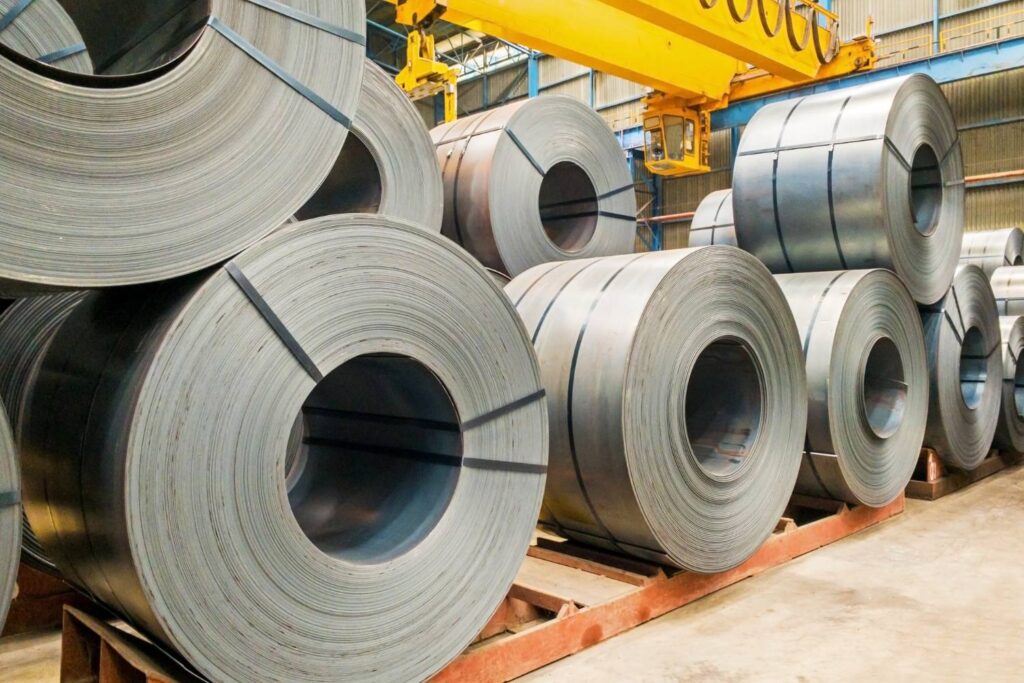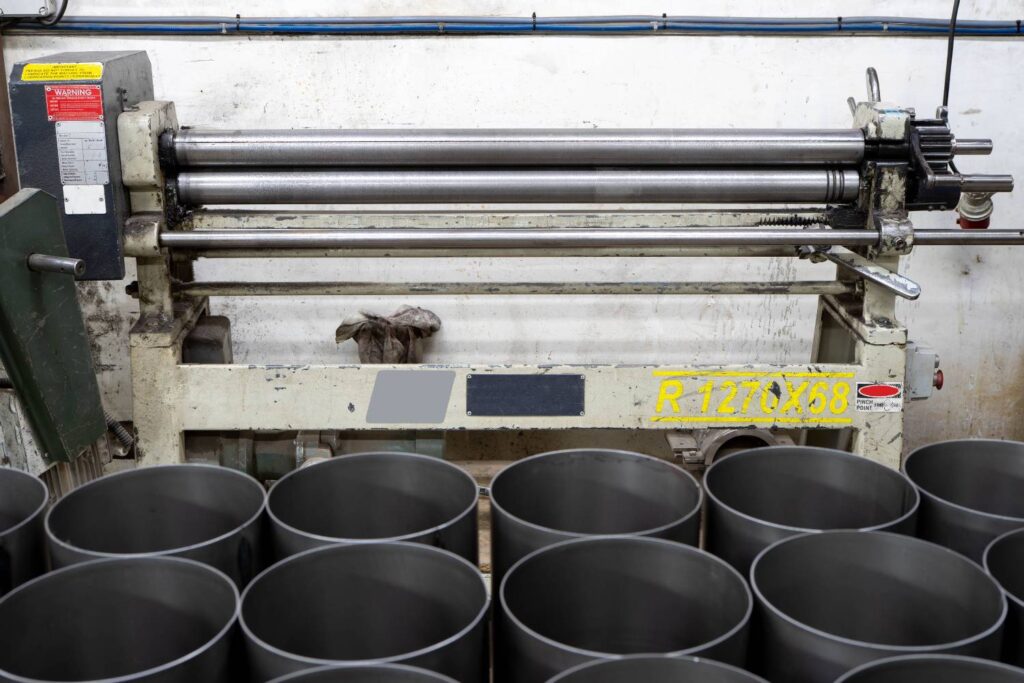Achieving desired results in manufacturing and construction projects requires a deep understanding of the intricacies of various processes in metal fabrication.
Although forming and rolling use different approaches and serve different functions, both are essential for shaping metal objects. This exploration aims to clarify the specific roles each process plays in the metalworking industry.
Whether you’re an experienced engineer, a materials science major, or just someone interested in metal fabrication, this article will guide you through the distinct worlds of forming and rolling, two crucial manufacturing processes.
Gain insight into their critical differences and understand why one is often preferred over the other.
Let’s get straight to the point
Forming and rolling are crucial yet distinct metal fabrication processes. Forming shapes metal into complex designs without removing material, using techniques like bending and stretching, ideal for detailed, low to medium-volume production.
Rolling, on the other hand, continuously shapes metal into long, uniform profiles, perfect for high-volume manufacturing with efficiency and consistency.
Understanding their differences helps in selecting the right method for specific manufacturing needs, balancing precision, volume, and cost.

Mastering the Art of Metal Forming
Metal forming is a foundational process in the vast landscape of manufacturing, supporting industries ranging from automotive and aerospace to household appliances.
This complex process involves shaping raw metal into precise, functional forms using various techniques honed over decades. To master the art of metal forming, it’s crucial to understand its fundamentals, embrace the diversity of methods, and adhere to best practices to ensure excellence in every bend, cut, and join.
Fundamentals of Metal Forming
At its core, metal forming involves manipulating sheet metal, often made from alloys like steel or aluminium, into different shapes and sizes.
This process is characterised by its ability to transform metal sheets of varying thicknesses—from thin foils to thick plates—into desired forms without compromising their inherent properties, such as flexibility and strength.
Fundamental Techniques in Metal Forming
The metal forming journey typically begins with cutting, where sheet metal is tailored into specific shapes and sizes.
Techniques such as shearing, sawing, and laser cutting are selected based on factors like material type and the precision required. Following cutting, the shaping process employs methods like bending, folding, and rolling to achieve the final contour.
Skilled fabricators use tools such as press brakes and rollers to shape the metal with precision. The final phase, joining, brings individual pieces together into a cohesive product using welding, soldering, or mechanical fastening, depending on the project’s requirements.
Shearing in Metal Forming
A critical step in metal forming is shearing, which involves dividing sheet metal along a straight line using force to create a clean cut. This method is favoured for its simplicity and efficiency, producing minimal waste compared to other material removal techniques.
Stretching and Blanking
Stretching is used to form shapes or cavities, while blanking cuts out parts from the sheet. These processes highlight metal forming’s versatility in creating complex components, underscoring its adaptability to various manufacturing needs.
Advanced Techniques: Rotary Shearing and Fine Blanking
Rotary shearing offers continuous cutting action similar to a can opener, making it ideal for precise dimensioning. Fine blanking, a more refined version of the traditional method, produces parts with tight tolerances and smooth edges, enhancing the precision in metal manufacturing.
Bend Radius and Bending Operations
Understanding the bend radius is crucial to prevent material defects during bending operations. This factor influences the deformation capacity of sheet metal, ensuring integrity in the final product. Metal bending, a predominant forming method, uses force along a bend line to sculpt metal into angles and forms, showcasing the versatility of the process.
Flanging and Stretch Forming
Flanging creates a curled flange to reinforce edges, enhancing structural integrity. Stretch forming involves stretching metal over dies to produce contoured parts, demonstrating the process’s ability to achieve intricate shapes.
Draw Beads and the Limiting Drawing Ratio
Draw beads control material flow in forming operations, while the limiting drawing ratio defines the maximum depth achievable in drawn parts, guiding the design and success of the forming process.
Best Practices in Metal Forming
Mastering metal forming requires careful material selection, thoughtful design that considers process limitations, and meticulous technique execution. Addressing common issues like springback and wrinkling is essential to achieving high-quality outcomes, with troubleshooting strategies in place to overcome potential challenges.
Metal Rolling
Metal rolling is a sophisticated and vital process in the manufacturing industry, shaping the framework of modern infrastructure and technology. With insights from leading sources, we explore the world of metal rolling—a domain where precision meets productivity, moulding metals into forms integral to our daily lives.
The Essence of Metal Rolling
At its core, metal rolling transforms raw metal into sheets, beams, or specific profiles through mechanical processes. Characterised by hot and cold rolling techniques, metal rolling adapts to the unique properties of the material, creating components with exceptional accuracy. This process lays the foundation for structures and machinery that define our modern landscape, from towering skyscrapers to the vehicles that traverse our roadways.
The Spectrum of Rolling Techniques
Metal rolling encompasses various techniques, each tailored to meet specific industrial needs. Roll forming is particularly notable for its continuous shaping of flat metal strips into precise profiles, catering to a wide range of metals, including steel, aluminium, and stainless steel. This process ensures uniformity and strength, which are critical for maintaining high-quality standards in industries such as automotive and aerospace.
Innovations and Sustainability
The evolution of metal rolling is marked by a steadfast commitment to innovation and sustainability. Advances in materials, coatings, and roll designs continuously enhance the efficiency and durability of rolling processes. Simultaneously, the industry embraces eco-friendly initiatives, striving for energy-efficient technologies and recycling practices that align with global efforts to reduce environmental impact.
Overcoming Challenges
Navigating the complexities of global supply chains and market competition, metal rolling mills worldwide adapt to shifting dynamics. By embracing digital transformation and automation, these mills improve operational efficiency and precision, ensuring resilience against disruptions. Customisation and product diversification emerge as strategies to meet growing consumer demands, further shaping the industry’s future.
The Unseen Heroes: Backup Rolls
In the detailed world of metal rolling mills, backup rolls play a crucial role in enhancing efficiency. These often overlooked components provide essential support to primary work rolls, ensuring the metal achieves the desired shape and thickness. Backup rolls help extend equipment life and streamline maintenance by reducing distortions and improving surface finishes, underpinning the overall success of the rolling process.
Forward-Thinking: The Digital Era
As the industry advances into the digital era, innovations such as IoT, big data analytics, and cloud computing are redefining manufacturing paradigms. These technologies foster predictive maintenance, process optimisation, and global collaboration, heralding a new era of efficiency and excellence in metal rolling mills.
The Significant Distinctions Between Forming and Rolling
While these techniques share the goal of manipulating metal, their methodologies, applications, and outcomes are distinctly different. By drawing insights from industry experts, we can highlight the significant distinctions between forming and rolling, offering clarity for professionals navigating these essential metal fabrication processes.
Forming: The Art of Shaping Metal
Forming is a broad category encompassing various techniques to shape metal pieces without removing material. This includes bending, stretching, and pressing metal into complex shapes using force or pressure. Forming is versatile, allowing the creation of intricate designs with high precision.
Techniques such as stretch forming and press braking fall under this category, each tailored for specific needs—stretch forming excels in producing complex, curved profiles, while press braking is ideal for creating precise bends and folds in sheet metal.

Rolling: Continuous Shaping for Uniform Profiles
On the other hand, rolling refers to the continuous bending of metal, typically into long, uniform profiles. Roll forming and bending are primary examples of metal sheets or strips being passed through rollers to shape them gradually. This process is highly efficient for producing lengthy metal parts like channels, rails, and frames, offering consistency and speed. It is particularly suited for high-volume manufacturing.
Complexity and Flexibility
- Forming is renowned for its flexibility in creating a wide range of shapes, including highly complex designs that require detailed work and precision.
- Rolling is optimised for producing simpler, repetitive shapes over long lengths, with less variability in cross-sectional design across the piece.
Volume and Efficiency
- Forming techniques like press braking are more adaptable for low to medium production volumes where customization and precision are paramount.
- Rolling is the go-to process for high-volume production, where its continuous operation significantly enhances efficiency and throughput.
Material Utilization and Waste
- Forming processes are designed to minimize waste, as they do not remove material but rather shape it, often leading to better material utilization.
- Rolling also boasts efficient material use, especially in roll forming, where the continuous process limits waste and allows for handling longer materials with consistent quality.
Cost Considerations
- Forming processes can be more cost-effective for smaller runs due to lower setup costs and flexibility in handling various materials and thicknesses.
- Rolling, particularly roll forming, may involve higher initial setup costs due to the need for custom roller dies, but it becomes increasingly cost-efficient at larger volumes due to its speed and minimal waste.
Application Specificity
- Forming is preferred for applications requiring detailed shapes, high structural integrity, and meticulous maintenance of material properties.
- Rolling is ideal for long, uniform products used in construction, automotive framing, and racking systems, benefiting from the process’s consistency and speed.
Conclusion
Forming and rolling are two essential processes in metal fabrication that shape metal objects into various shapes and sizes. Forming involves manipulating sheet metal, typically made of alloys like steel or aluminium, into desired forms without compromising its intrinsic properties.
Techniques such as cutting, bending, and stretching are fundamental to the forming process, allowing for the creation of complex components with high precision.
On the other hand, metal rolling is a critical process that transforms raw metal into sheets, beams, or specific profiles through various mechanical techniques.
Understanding the distinct roles of forming and rolling, their applications, and their respective strengths can guide professionals in choosing the most suitable process for their manufacturing needs, ensuring efficiency, quality, and cost-effectiveness in metal fabrication projects.

